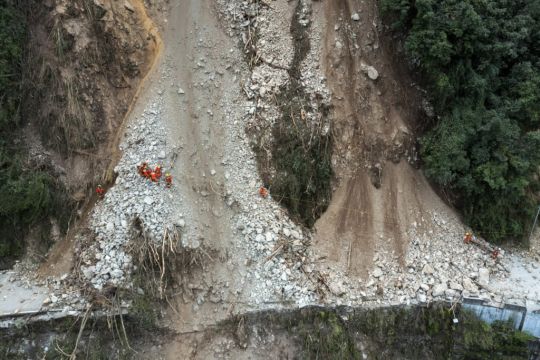Heavy rains are complicating earthquake recovery efforts in south-west China, where the death toll from the disaster has risen to 82.
More than 20,000 people have been moved to temporary shelters amid the threat of landslides and buildings collapsing in the mountainous region of Sichuan province, state media reported on Thursday.
The rain is expected to last until at least Friday.
Another 35 people are missing and 270 taken to hospital with injuries from the magnitude 6.8 quake that levelled building and sent boulders tumbling on to roads in Sichuan’s Ganze Tibetan Autonomous Region and neighbouring Ya’an city on Monday, the reports said.
Buildings were also shaken in the provincial capital of Chengdu, where 21 million people are among the 65 million Chinese under a strict Covid-19 lockdown confining them to their homes and residential compounds.
Following the earthquake, police and health workers in Chengdu refused to allow anxious residents outside, adding to public frustration over the government’s strict zero-Covid policy mandating lockdowns, quarantines and other restrictions, even while the rest of the world has largely reopened.
Despite the impact on the economy and public sentiment, the policy has become closely identified with President and Communist Party leader Xi Jinping in what has been called a politicisation of health care.
The government is also discouraging domestic travel during the mid-autumn festival on Saturday and the week-long national holiday at the start of October.
Virus outbreaks have been reported in 103 cities, the highest since the early days of the pandemic in early 2020.
Monday’s quake was centred in a mountainous area of Luding county, which sits on the edge of the Tibetan Plateau roughly 125 miles from Chengdu.
Friction between tectonic plates in the region frequently cause earthquakes, including China’s deadliest in recent years, a 7.9 magnitude temblor in 2008 that killed nearly 90,000 people in Sichuan.
That quake devastated towns, schools and rural communities outside Chengdu, leading to a years-long effort to rebuild with more resilient materials.







